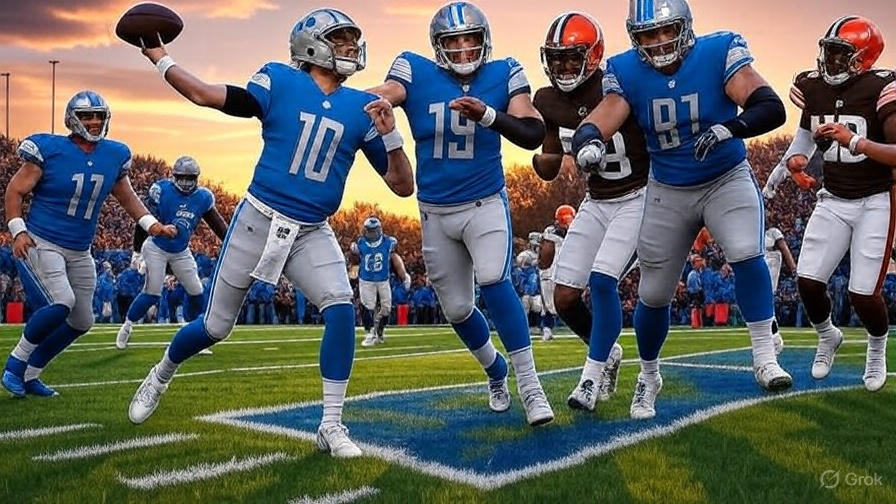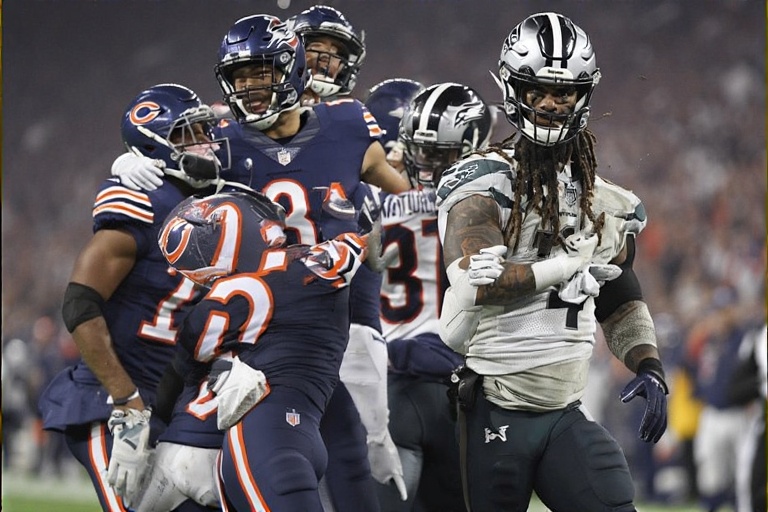
nfl turnover differential
In the high-stakes world of the National Football League (NFL), every play counts, and every mistake can be costly. One of the most critical statistics that can determine the outcome of a game or even an entire season is the NFL turnover differential. This metric, often overlooked by casual fans, is a powerful indicator of a team’s efficiency, discipline, and ability to control the game. In this comprehensive exploration, we will delve into what NFL turnover differential is, why it matters, how it has shaped team success historically, and its impact in the 2024 season, supported by data and strategic insights.
What is NFL Turnover Differential?
At its core, NFL turnover differential is a straightforward yet revealing statistic: it represents the difference between the number of turnovers a team forces from its opponents and the number of turnovers the team itself commits. Turnovers in NFL football occur when a team loses possession of the ball without kicking or punting, specifically through interceptions (when a defensive player catches a pass intended for an offensive player) or fumbles (when a player loses the ball, and it is recovered by the opposing team). Notably, turnovers on downs—failing to convert on fourth down—are not included in NFL turnover differential statistics (Wikipedia: Turnover).
For example, if a team records 20 turnovers gained (interceptions and fumble recoveries) and 15 turnovers lost (interceptions thrown and fumbles lost), their NFL turnover differential would be +5. A positive differential indicates a team excels at protecting the ball while forcing opponent errors, whereas a negative differential suggests struggles in ball security or defensive opportunism.
Why is NFL Turnover Differential Important?
The significance of NFL turnover differential lies in its profound impact on game outcomes. A multiseason analysis by Harvard University found that teams with a positive NFL turnover differential of +1 in a game won 69.6% of the time, with win probabilities increasing to 83.7% for a +2 differential and 90.7% for a +3 differential (Harvard Sports Analysis). These statistics underscore how turnovers can shift game momentum.
Turnovers are game-changers because they abruptly end an offensive drive without a score, often granting the opposing team superior field position. This can lead to quick scoring opportunities, altering the game’s flow. Additionally, turnovers can demoralize a team, affecting their confidence and strategic approach. As one NFL coach famously stated, “Turnovers are killers,” highlighting their critical role in determining winners and losers.
Beyond individual games, NFL turnover differential is a strong predictor of seasonal success. Teams with consistently positive differentials are more likely to secure playoff berths and contend for championships, while those with negative differentials often struggle to maintain winning records (Covers: Turnover Margin).
Historical Data and Trends
Historically, teams with strong NFL turnover differentials have often been among the NFL’s elite. For example, the 2007 New England Patriots, who achieved a perfect 16-0 regular season, boasted an NFL turnover differential of +34, reflecting their dominance in ball security and turnover creation. Similarly, the 2015 Denver Broncos, with a +15 differential, leveraged this statistic to secure a Super Bowl victory. These examples illustrate how NFL turnover differential can be a hallmark of championship-caliber teams.
Conversely, teams with poor NFL turnover differentials often face significant challenges. The 2017 Cleveland Browns, with an NFL turnover differential of -17, endured a winless 0-16 season, underscoring the detrimental impact of turnovers. Data from 2003 to 2010 shows that teams with a season-long NFL turnover differential of +9 or better covered the spread in 60% or more of their games, while those with -9 or worse struggled significantly (Maddux Sports).
2024 Season Overview
The 2024 NFL season further highlighted the importance of NFL turnover differential. According to data from StatMuse, the Detroit Lions led the league with an extraordinary NFL turnover differential of +222, recording only 3 turnovers lost against 25 gained (StatMuse 2024). This remarkable performance likely contributed to their strong season, positioning them as playoff contenders.
In contrast, the Cleveland Browns struggled with an NFL turnover differential of -177, with 11 turnovers lost and 23 gained, reflecting a season marred by offensive mistakes and defensive shortcomings. Other notable teams included the Buffalo Bills (+157), Kansas City Chiefs (+59), and Indianapolis Colts (-50), illustrating the wide range of NFL turnover differential outcomes and their impact on team performance.
The following table summarizes the NFL turnover differential for select teams in the 2024 season:
| Team | NFL Turnover Differential | Turnovers Lost | Turnovers Gained | Games Played |
|---|---|---|---|---|
| Detroit Lions | +222 | 3 | 25 | 17 |
| Buffalo Bills | +157 | 2 | 6 | 17 |
| Kansas City Chiefs | +59 | 3 | 11 | 17 |
| Cleveland Browns | -177 | 11 | 23 | 17 |
| Tennessee Titans | -149 | 13 | 21 | 17 |
| New York Giants | -142 | 10 | 13 | 17 |
| Indianapolis Colts | -50 | 10 | 19 | 17 |
This table highlights the stark contrast between teams excelling in NFL turnover differential and those struggling, directly correlating with their seasonal success or challenges.
Case Studies: Teams with Extreme NFL Turnover Differentials
To better understand the impact of NFL turnover differential, let’s examine two teams from the 2024 season: the Detroit Lions and the Cleveland Browns.
Detroit Lions (+222)
The Detroit Lions’ NFL turnover differential of +222 in 2024 is a testament to their disciplined offensive play and aggressive defensive strategy. With only 3 turnovers lost, their offense demonstrated exceptional ball security, minimizing costly mistakes. Their defense, with 25 turnovers gained, was highly effective at forcing interceptions and fumbles. This combination allowed the Lions to control game tempo, maintain possession, and capitalize on opponents’ errors, contributing to a highly successful season.
Cleveland Browns (-177)
In stark contrast, the Cleveland Browns’ NFL turnover differential of -177 reflects a season fraught with difficulties. With 11 turnovers lost, their offense struggled to protect the ball, often giving opponents prime scoring opportunities. Their defense, despite gaining 23 turnovers, could not offset these losses, leading to a negative differential that likely hindered their win-loss record. The Browns’ season serves as a cautionary tale of the importance of managing NFL turnover differential.
Strategies to Improve NFL Turnover Differential
Given the critical role of NFL turnover differential, teams employ various strategies to enhance their performance in this area.
Offensive Strategies
- Ball Security Drills: Coaches emphasize techniques to secure the football, such as proper hand placement during tackles and scrambles, to reduce fumbles.
- Conservative Play-Calling: In high-pressure situations, teams may opt for safer plays, like running the ball, to minimize the risk of interceptions.
- Quarterback Decision-Making: Quarterbacks are trained to make smart, low-risk decisions, avoiding passes that could be intercepted.
Defensive Strategies
- Aggressive Defense: Defensive coordinators design schemes to pressure quarterbacks, increasing the likelihood of forced fumbles and interceptions.
- Opponent Analysis: Teams study opponents’ tendencies to identify moments when they are prone to turnovers, allowing defenders to capitalize.
- Turnover Creation Techniques: Players are coached on techniques like stripping the ball from runners or tipping passes to create interception opportunities.
Conclusion
NFL turnover differential is a pivotal statistic that reflects a team’s ability to protect the ball and exploit opponents’ mistakes. Its impact on game outcomes and seasonal success is undeniable, as evidenced by historical trends and the 2024 season’s data. Teams like the Detroit Lions, with a stellar +222 differential, demonstrate how mastering this statistic can lead to success, while teams like the Cleveland Browns, with a -177 differential, highlight the challenges of poor turnover management.
For fans, analysts, and bettors, NFL turnover differential offers valuable insights into team performance and potential. As the NFL continues to evolve, this statistic will remain a cornerstone of strategic analysis, underscoring the timeless adage: “Turnovers are killers.” By prioritizing ball security and turnover creation, teams can significantly enhance their chances of victory, making NFL turnover differential a key to football success.



